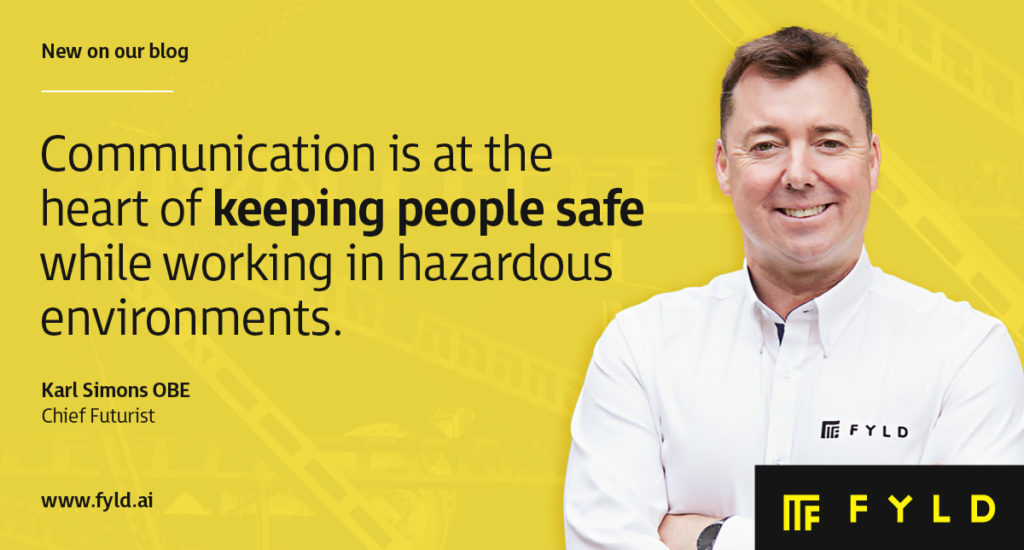Circular economy of safety enabled through effective engagement and communication
Transparent communication enables efficient safety operations across organisations. Team members who engage with each other effectively will reap the best results and learnings for the future. In this last instalment of our futuristic safety blog series, we explore the role communication has in developing, implementing and tracking the future landscape of safety.
Chief Futurist at FYLD, Karl Simons OBE, said: “Communication is at the very core of keeping people safe while working in hazardous environments. Efficient communication and engagement across organisations result in safer and more robust operations.
“Risk visualisation is critical to enable effective and transparent consideration of controls prior to the commencement of work and throughout the activities employees undertake every day. Most organisations have systems in place for their teams, alas regrettably for fieldworkers, many of these aren’t used at all or are used very little due to their complexity or poor design. This exposes employees to increased risk and companies to poor levels of compliance.
“This is why smart new mobile work solutions like FYLD are emerging and gaining so much market traction at pace. Progressive organisations moving onto FYLD are not only addressing risk visibility but are introducing Real Time Risk Visualisation (RTRV) between remote workers and remote managers.
“The future outlook for communication to and from frontline fieldworkers is pretty exciting as machines, through AI algorithms, are brining logic reasoning to aid risk perception and influence behaviours at work.”

Circular economy of machine learning
To achieve safer operations, organisations must look to implement processes that both looks to the future, but also utilises the existing knowledge and behaviours towards safety to the maximum.
A circular economy is a model of production and consumption which promotes a life cycle approach to materials, behaviours and processes. This way of thinking and methodology are major elements of futuristic safety.
A platform’s machine learning capabilities learns from its users, and in turn its users learn from the platform. Capturing, analysing and storing relevant data informs the best practice of the future. Machine learning algorithms benefit from volume of data as well as experience. You can learn more about how machine learning works in more detail here.
Communication and digital onboarding are key
Vital services, like utilities, construction and airports, benefit massively from being able to provide and receive live project updates. This keeps fieldworkers and the public safe, while maintaining smooth operations. As the world continues to work collaboratively and expand reach through communication tools, it’s crucial that the rate of technology development keeps up. You can read more about FYLD as a communication tool here, and watch our video explaining more below:
As technology continues to develop, digital onboarding and ongoing training are key to enabling workers to engage with tools like FYLD and see them as an asset, not a burden. To support this, FYLD utilises eduMe, a mobile-based training platform for the deskless workforce, the data from which shows that 85% of FYLD users can self-onboard successfully. This means users can train themselves on the platform, as well as communicating with our expert team for any extra support when necessary. This provides options for learning styles and differences in accessibility.
Customer feedback
FYLD’s customers reap the rewards of improved communications, stating:
“FYLD understands the importance of efficient communication and how this benefits our teams out in the field. Our fieldworkers love the interactivity of the platform, and crucially, the quick turnaround time for key decisions to be made.” – Martin Holloway, Executive Operations Director at SGN.
“Communicating laterally across an organisation enables comprehensive and stronger connections – all adding value to the front-line operational work, while keeping the workforce and public safe.” – Ben Legg, Global Corporate Health, Safety and Wellbeing Director at Ferrovial.
To learn more about futuristic safety, you can read about the role leadership has to play here and how competency is key in rolling out the safety practices and behaviours of the future here.















